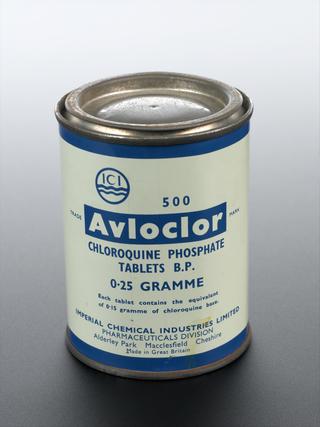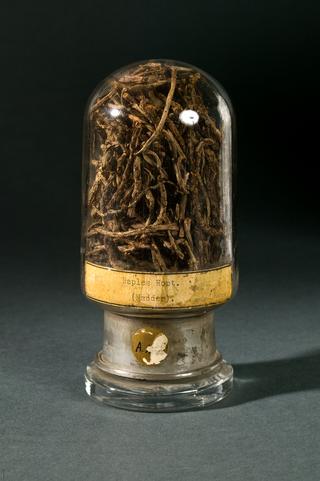
Oil pumping unit (nodding donkey)
- Made:
- 1940 in unknown place
This Legrand ‘nodding donkey’ oil pump was built sometime in the 1940s by the Legrand industrial group and was installed at the Eakring oilfields in Nottinghamshire.
The oil pump stands at approximately 18 feet and 6 inches, and is around 5 feet 6 inches wide, 11 feet long, and weighs an estimated 3 tons. The body and frame of the oil pump is painted a light green. This design by Legrand includes a double pitman design where the walking beam is pulled up and down by two arms either side of the counterbalance.
At the other end of the walking beam is the ‘horsehead’ which serves as one of the two counterbalances for the pump, and to which the pump is connected to the wellhead via a rod bar. The attached motor will turn a belt, moving the walking beam up and down creating a ‘nodding effect’ as the horsehead elevate and declines.
In 1939, surveyors from the D’Arcy Exploration Company Ltd (which would become British Petroleum) and the Anglo-Iranian Oil Company discovered the UK’s first onshore oil fields in Nottinghamshire around Eakring and Dukes Wood. Soon enough sets of oil wells and pumpjacks (often called ‘nodding donkeys’) were built, primarily by the Oil Well Engineering Company.
This was a fortunate discovery as the oil discovered in Nottinghamshire would become one of the country’s most important resources during the Second World War. By the end of the war in 1945 around 170 oil wells and pumpjacks were in constant use, drilling to levels of approximately 7500 feet, and over the course of the war would produce approximately between 2.25 and 3.5 million barrels of oil.
This ‘nodding donkey’ was built by the Legrand industrial group and was likely one of these 170 pumpjacks installed at Eakring in the early 1940s and was operational throughout the Second World War.
The Nottinghamshire oil fields were especially important during the Battle of Britain, being the UK’s only reliable source of oil. More importantly, this oil was of especially high quality with a higher-octane rating than oil produced in oil fields controlled by Nazi Germany. The higher-octane fuel was an extremely important factor when it came to the Royal Air Force fighter planes outperforming the Luftwaffe in the skies across Britain, and later throughout Europe. British Spitfires could reach max speeds of approximately 340 mph in 1939 but by 1944, when they had engines which could better exploit the higher-octane fuel, they could reach speeds of up to 425 mph. The Eakring and Dukes Wood oilfields were so important that their existence was kept a state secret by the UK government throughout the war.
Drilling in the Eakring and Dukes Wood oil fields would continue until around 1964, at which point they had produced more than 47 million barrels of oil. The eventually discovery of the North Sea oil fields would shift the UK’s attention to offshore oil extraction. However, Eakring and Dukes Wood continued to play a role in the development of the oil industry. British Petroleum (BP) set up its first major research and exploration headquarters in Eakring during the war, where it would stay until the 1990s, and would contribute to the discovery of the North Sea oil fields and the development of the first UK oil rigs. Many of the indispensable workers who operated on these early offshore oil fields were veterans of the Eakring oil fields.
Today in Dukes Wood there is a dedication to the 42 American oilmen from Ardmore, Oklahoma known as the ‘Roughnecks’, who moved to the UK during the war to ramp up oil production, which they did in near complete secrecy. The statue dedicated to them was unveiled in 1991, called the ‘Oil Patch Warrior’.
Details
- Category:
- Industrial Chemistry
- Object Number:
- 1981-1841
- Measurements:
-
overall: 3352.8 mm 3 t
- type:
- pumping unit




